Published on October 26, 2018 Driven Products
The goal of a Tire Pressure Monitoring System (TPMS) is to help avoid traffic accidents, poor fuel economy, and increased tire wear due to under-inflated tires. Due to the influence tire pressure has on vehicle safety and efficiency, TPMS is required on vehicles manufactured for sale within the United States after 2007.
You’ve probably noticed the TPMS warning light on your dashboard at some point. This is a warning to let you know that one or more of your tires is under-inflated. In most cases you can pull your vehicle into a gas station and fill your tires with air to reach the manufacturer recommended tire pressure. However, this can also be a warning that one or more of your TPMS sensors are failing and it’s time for a new sensor.
| 1. Break the bead of the tire ensuring the valve is located on the opposite side of the rim from the bead breaker blade. When the tire is dismounted the valve must be located at 1 o’clock to the tire fitting head. | |
| 2. Apply lubricant to the valve stem. | |
| 3. Place the valve stem through the valve hole, ensuring the rubber makes good contact with the valve hole all around. | |
| 4. Use the valve puller to pull the valve stem through the hole until it snaps into place, ensuring that the valve angle is perpendicular to the hole. If using a metal valve puller, protect the rim. | |
| 5. Please note: failure to pull the valve through at the correct angle can result in damage to the valve stem or prevent the rubber from creating an air-tight seal. | |
| 6. Attach the valve stem to the sensor using the nut. Place the anti-rotation pin provided through the base of the valve stem, to keep the valve stem in place. The nut must be tightened to 12.5 in-lbs (1.4 Nm) using a T15 Torx bit and torque tool. | |
| 7. When remounting the tire on to the rim ensure that the valve starts on the opposite side of the rim from the tire fitting head. | |
| 8. Now that your sensors are installed, they will need to be relearned to your vehicle. Contact a Driven Products Fitment Specialist for help identifying your vehicle’s TPMS relearn procedure. |
The cost of installing TPMS sensors will depend on the installer. Assuming you already have your snap-in TPMS sensors purchased and ready to install, you can expect to pay between $20-$50 per sensor installation.
DP-Accessories brand snap-in TPMS sensors are equipped with an advanced Maxell battery. The typical life expectancy is 7-years or 100,000 mile. Our sensors come with a 3 year / 36,000 mile limited warranty.
Don’t confuse TPMS relearning with TPMS programming. Your DP-Accessories TPMS sensors are preprogrammed for your vehicle before we send them to you.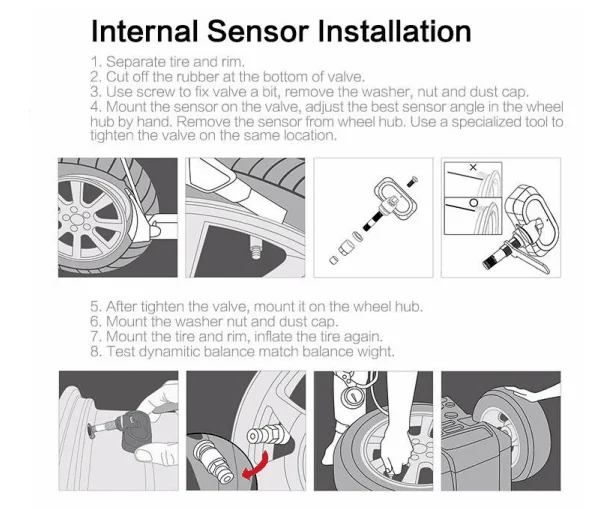 When installing new TPMS sensors replacing, your vehicle manufacturer has specific steps to put the vehicle in learn mode and program the sensors. There are some vehicles that will relearn sensors automatically when your tires are rotated. However, most TPMS sensors will require an action by you to relearn them.
When installing new TPMS sensors replacing, your vehicle manufacturer has specific steps to put the vehicle in learn mode and program the sensors. There are some vehicles that will relearn sensors automatically when your tires are rotated. However, most TPMS sensors will require an action by you to relearn them.
Each vehicle manufacturer will have their own unique TPMS relearn procedure. Contact a Driven Products Fitment Specialist for help identifying your vehicle’s TPMS relearn procedure.
Filed in: installation tips, snap-in, snap-in tpms sensors, snap-in valve stems, tpms, tpms sensors
Share:With millions of vehicles expected to need TPMS sensor replacement, it’s important to know what is involved with the replacement, installation and relearn of TPMS sensors.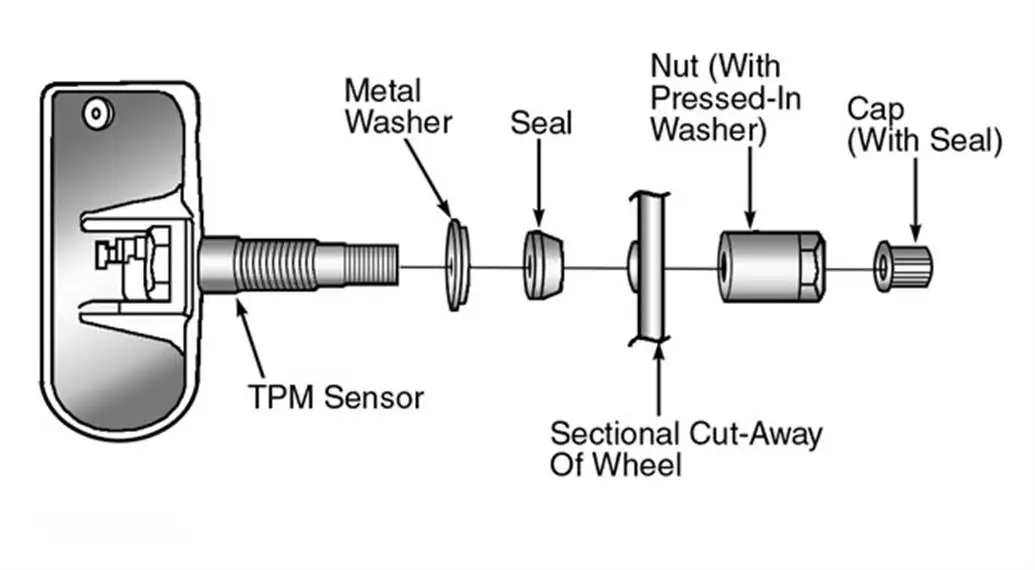
Over the last decade, the introduction of tire pressure monitoring systems (TPMS) has revolutionized the way motorists, shops and manufacturers approach tire maintenance. The system provides a great safety benefit to motorists by alerting them of underinflated tires. Low tire pressure may lead to a blowout and vehicle crash. Improper installation or maintenance of TPMS sensors can create challenges for technicians and shops.
A dashboard TPMS warning light on a vehicle could be signaling one or multiple issues such as a dead or dying sensor battery, a system’s inability to communicate with all vehicle sensors or low pressure in one or more tires. Following the TREAD act, all vehicles model year 2008 and newer are required to be equipped with TPMS, which increases vehicle safety by monitoring tire pressure and communicating this information to the driver.
The first cycle of vehicles affected by the TREAD act, which includes the roughly 6.8 million new vehicles sold in the United States in 2008, are prime candidates for TPMS service as their sensors are beginning to reach the end of their 7-10 year life expectancy.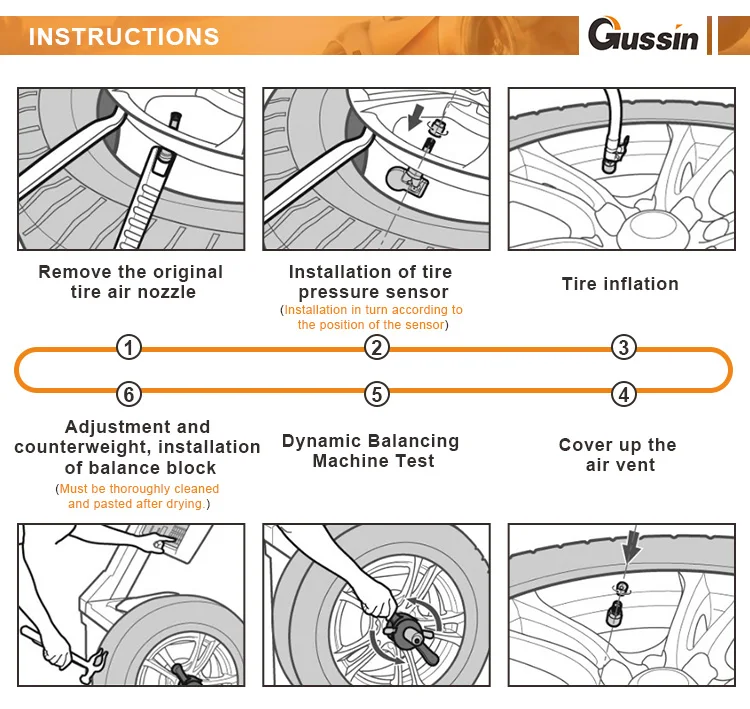 With millions of vehicles expected to need TPMS sensor replacement, it’s important to know what is involved with the replacement, installation and relearn of TPMS sensors.
With millions of vehicles expected to need TPMS sensor replacement, it’s important to know what is involved with the replacement, installation and relearn of TPMS sensors.
When investigating the cause of the TPMS warning light, start with a visual inspection. How old is the vehicle? Do the tires look low or flat? Is there physical damage on the sidewall, tread or rim?
Once you find the issue, it can be fixed. A tire may need air, repair or replacement, a rim may be damaged and need replacing or a sensor may be damaged or dead. Each time a tire is replaced or moved to a different position on the vehicle, or when installing new TPMS sensors, you may need to reprogram the system.
When replacing or recalibrating the sensors, manufacturers have created specific steps to put the vehicle in learn mode and program sensors. Some vehicles may relearn sensors automatically when tires are rotated. However, most TPMS sensors will require an action by you to relearn or reprogram them. To save time, a standalone or paired TPMS tool can be used to reset and relearn sensors quickly. Some tools will walk you through the relearn process. This includes putting the system in learn mode and reading each sensor. Some diagnostic scan tools will also include relearn procedures.
To save time, a standalone or paired TPMS tool can be used to reset and relearn sensors quickly. Some tools will walk you through the relearn process. This includes putting the system in learn mode and reading each sensor. Some diagnostic scan tools will also include relearn procedures.
Your customer may see the TPMS dashboard light as an annoyance, but you can educate them on the importance of proper and improper TPMS maintenance.
The major benefits of TPMS maintenance are extended tire life and safety. The system ultimately saves time and money by helping maintain proper tire pressure for even wear, better fuel economy and extended tire life.
A broken TPMS may also lead to lower fuel economy. With properly maintained and inflated tires, your customers can get better gas mileage and spend less at the pump.
As mentioned above, improper inflation can have a catastrophic impact on vehicle safety, including tire breakdown and failure.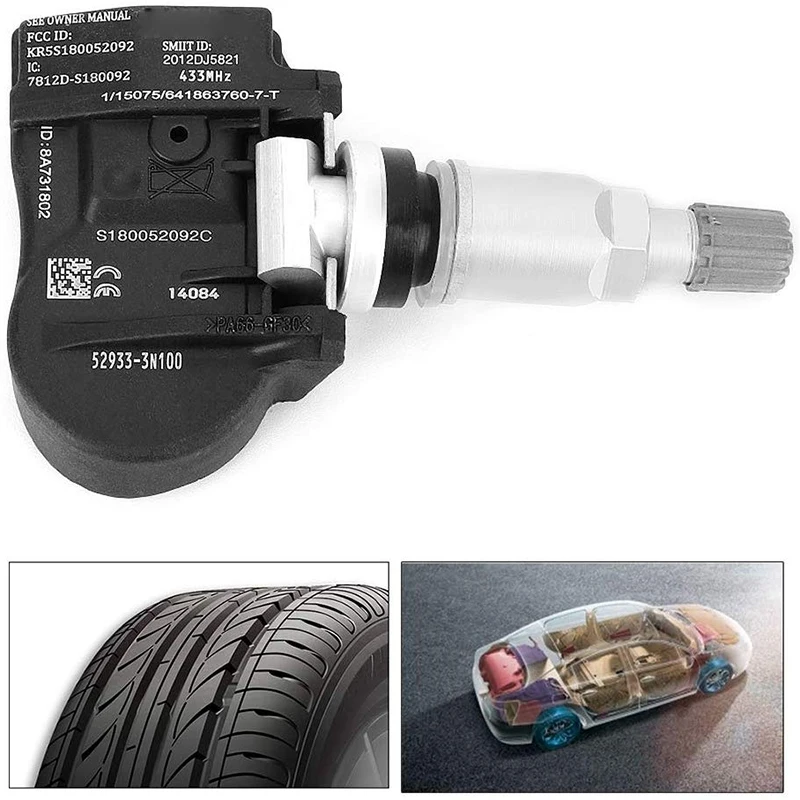 Properly inflated tires can mean the difference between safe driving and a higher risk for accidents.
Properly inflated tires can mean the difference between safe driving and a higher risk for accidents.
In comparison to other systems in today’s vehicles, TPMS is relatively straightforward. However, don’t overlook two factors in TPMS service – the spare tire and location of the sensor within each tire.
A spare tire typically remains forgotten, mounted to the frame or in the trunk, but for some TPMS systems, it’s a crucial factor in recalibration. If you don’t activate the sensor in the spare tire, the system will give a false read. Alternatively, an active sensor in the spare tire will be recognized by the vehicle, so it may be the source of the warning light as well. Always check the spare tire when servicing TPMS.
When changing a tire, you risk damaging a TPMS sensor. The highest danger is when you’re breaking the bead and removing the old tire, particularly when breaking the bead using a tool such as a pry bar. Use care when prying around the valve stem, where most modern-day sensors will be located.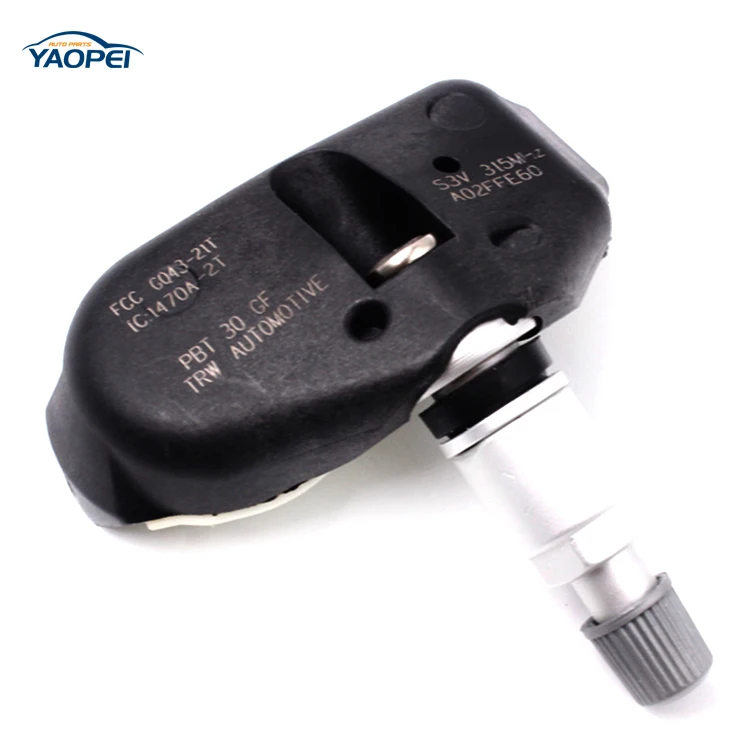
“Don’t overlook two factors in TPMS service – the spare tire and location of the sensor within each tire.”
If a customer is simply looking for you to turn off their TPMS light without fixing the underlying cause, this type of situation can create unnecessary liability for you and your shop. If you turn off the light without fixing the issue, you are violating the NHTSA’s “make inoperative” provision, which then leaves shops legally responsible for disabling the TPMS. It is your responsibility to explain this to your customer, and to refuse service if they decline to have the issue properly fixed.
If a single sensor has reached the end of its lifespan, it is highly recommended to replace all sensors at the same time. Similar to headlights, once one sensor dies, the rest are likely to be close behind. The same is true for a corroded valve stem or other non-impact sensor replacement. This is an important point for your customers to understand and can help you provide the best service for their vehicle.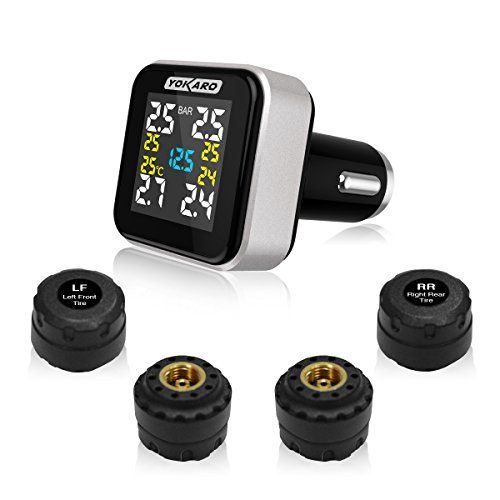 It also is a convenience to them.
It also is a convenience to them.
For any motorists that swap their tires out for changing seasons, it’s crucial that the TPMS sensors are reactivated and recalibrated each time. If this is not done, the vehicle’s TPMS will not perform properly and may cause the TPMS light to turn on.
TPMS is not going away. If you haven’t had to replace or relearn sensors before, you will in the future. A dedicated TPMS tool will help you and your shop from turning business away and allowing you to relearn and reprogram sensors faster.
Look for a tool with built-in reprogramming features so you’ll have all the information needed to complete the job quickly. One with an OBDII dongle can even put the vehicle into learn mode and wirelessly scan and relearn new sensors. Other tools can pair with your OTC diagnostic tools to relearn new sensors or work as a standalone tool. The right equipment can make the difference.
OTC 3834t
0041
• The tire bead should be torn off at an angle of about 90° to the valve. The tire bead should be torn off at an angle of about 90° relative to the valve.
The tire bead should be torn off at an angle of about 90° relative to the valve.
• When removing the wheel, do not let the tire or tool come into contact with the valve.
• Bead break must end near the valve.
3. Turn the wheel clockwise.
4. Check the valve position deviation (silver inlet) during transport and set the valve to the required position (metal brackets).
5. In order to prevent rotation and position deviation during tightening, the valve must be installed in the set position (inside the metal brackets). Tighten to the specified torque (8 Nm). Reuse of the nut is prohibited.
6. Install the valve in the hole so that the sealing washer and the metal surface are in contact.
7. Holding the body with two fingers, axially onto the valve with the other finger.
8. The laser mark on the housing must be visible.
9. When the valve is fully installed, tighten the nut a few turns by hand, provided the sensor is aligned with the bore.
10. Install the nut using a tool, keeping the valve and sensor in position.
11. The system automatically searches for the position of the sensor and memorizes new sensors.
• The bottom end of the TPMS sensor does not seal if the sensor is not fully inserted into the wheel, as shown in fig.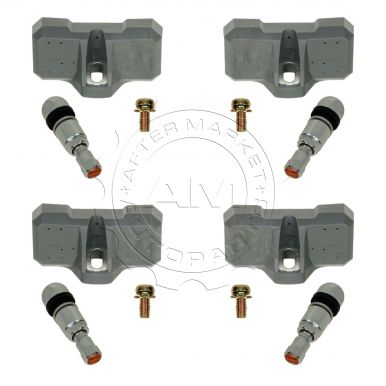
7. Remove the tire changer.
8. Inflate the tire until the beads are in the desired position.
______________________________________________
Tire pressure: 2.3 kg/cm³ (33 psi)
______________________________________________
Insufficiently inflated tires experience increased stress, which leads to various problems:
increased fuel consumption;
braking distance increases, which can lead to an accident;
Handling deteriorates, especially when it rains;
tires heat up quickly, which leads to accelerated destruction of rubber: cracks appear, tires begin to delaminate.
In turn, excessive pressure also has a number of negative factors. Among them, it is worth highlighting the following points:
there is a risk of serious damage to the tires;
the braking distance increases as the area of the contact patch with the road decreases;
reduced handling;
fuel consumption is increasing.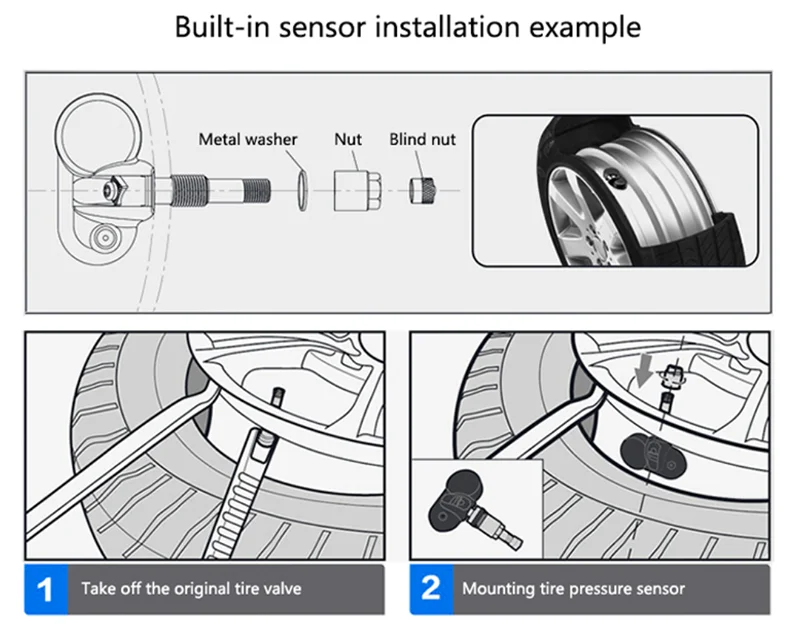
If there is too much pressure, there is a risk that the tire will explode when hitting an obstacle. In turn, this can damage the suspension and other elements of the car. That is why the installation of tire pressure sensors is not only the recommendations of automakers, but also your safety on the road.
Tire pressure sensor mounted inside the wheel. It directly measures the tire pressure and transmits the signal to the receiving device, which is combined with the display. If the data starts to diverge, then the indicator lights up, or an error code appears on the dashboard, which is accompanied by a signal. Thus, you will always know at what level the tire pressure is.
Due to the fact that each sensor has its own data rate and other design features, it is necessary to install only the equipment that is recommended by the manufacturer.
Vehicle handling, braking distance and fuel consumption are directly related to tire pressure. That is why it is very important to monitor this indicator. This can be done with a sensor. It measures the pressure and when it changes, it immediately notifies the driver about it. Thanks to the sensors, you can avoid accidents and other troubles that occur while driving on a flat tire.
That is why it is very important to monitor this indicator. This can be done with a sensor. It measures the pressure and when it changes, it immediately notifies the driver about it. Thanks to the sensors, you can avoid accidents and other troubles that occur while driving on a flat tire.
Our company carries out installation of tire pressure sensors on Range Rover . All our workshops are equipped with modern equipment that meets all JLR standards. For each client, a highly qualified master is assigned, who is fully responsible for the car. Our employees undergo training and mandatory internships abroad. Thanks to this approach, we provide quality service and perform all work at the highest level. Call, and the technical center staff will do everything to avoid unforeseen expenses and breakdowns on the road.
Under-inflated tires experience increased stress, which leads to various problems:
increased fuel consumption;
braking distance increases, which can lead to an accident;
Handling deteriorates, especially when it rains;
tires heat up quickly, which leads to accelerated destruction of rubber: cracks appear, tires begin to delaminate.
In turn, excessive pressure also has a number of negative factors. Among them, it is worth highlighting the following points:
there is a risk of severe tire damage;
the braking distance increases as the area of the contact patch with the road decreases;
reduced handling;
fuel consumption is increasing.
If there is too much pressure, there is a risk that the tire will explode when hitting an obstacle. In turn, this can damage the suspension and other elements of the car. That is why the installation of tire pressure sensors is not only the recommendations of automakers, but also your safety on the road.
Tire pressure sensor installed inside the wheel. It directly measures the tire pressure and transmits the signal to the receiving device, which is combined with the display. If the data starts to diverge, then the indicator lights up, or an error code appears on the dashboard, which is accompanied by a signal. Thus, you will always know at what level the tire pressure is.